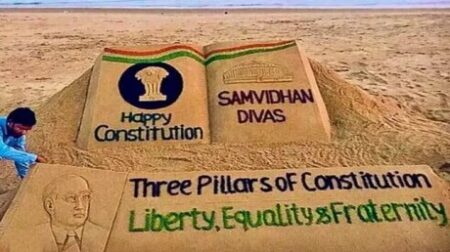Article 15 of the constitution of India barricades discrimination on the grounds of religion, race, caste, sex, or place of birth.
Apart from being a stagnant economy, India also faced several other issues like discrimination that degraded society.
Article 15 was proposed aiming towards equality in the Constituent Assembly, on which a debate was held 29 November 1948.
Some wanted additional protected grounds in the debate, whereas others argued further that the inclusion of gardens and roads in the denial of access is prohibited. But concluding all the arguments, B.R. Ambedkar, the chairman of the drafting committee, stated the text to be enough clarified.
Another proposal of Prof. K.T Shah, a member of the assembly, stated special provisions for Scheduled Castes and Backward tribes intending towards their safeguard.
The proposal was rejected by Ambedkar, arguing that its adaptation would perpetuate the segregation of these groups.
At the end of debate and amendment, the original text remained largely intact and became an Article of the Indian Constitution.
Article 15 initiated towards making India a secular, democratic, and republic nation, creating all the necessary provisions to safeguard the interests of all segments of the country’s population.
Fundamental Rights of Article 15
Article 15 is located under part 3 of the Indian constitution, dealing with fundamental rights. Apart from that, further articles also deal with issues related to the “right to equality.”
The fundamental rights are the primary civil liberties that each Indian citizen can enjoy while living in the nation.
Part 3 of the Indian Constitution, covering articles 12 to 35, is intended to protect individual rights like equality before the law, freedom of speech and expression, religious and cultural freedom, and many more legalities followed by most democracies.
The fundamental rights given by Article 15 imply that all citizens of the country, irrespective of race, place of birth, caste, gender, or religion.
If any case arises regarding violating Article 15, individuals can seek legal systems for ultimate justice.
The originality of these rights comes from different sources like England’s Bill of Rights, the United States Bill of Rights, and France’s Declaration of the Rights of Man.
Contents of Article 15
Article 15(1) and (2) forbids the nation from discriminatory activities on religion, race, caste, sex, place of birth, and others.
It also initiates rooms with no restrictions regarding the above grounds, accessing public facilities and amenities like shops, hotels, restaurants, etc.
Other than that, no Indian residents can be denied the use of tanks, wells, and sites of public resorts funded partially or majorly by the government or have been dedicated for general public use.
Article 15(3), another part of the article, deals with protective discrimination. It claims to protect the interest of women and children by creating special provisions for them.
Article 15(4) claims the creation of special arrangements promoting the interest and welfare of socially and educationally backward classes of the society, like S.C. and S.T.’s. Article 15(5) is based on the same criteria of 15(4), a step ahead by creating reservations concerning admissions in academics.
Both 15(4) and 15(5) are the foundation stones of the reservation system quota.
Indira Sawhney Case
The most famous case in history referring to reservation criteria was between Indra Sawhney and the union government in 1992.
The case was regarding modified reservation criteria that provided 10% reservation for the economically backward classes, which intended an 37% increase in the reservation limit.
In conclusion, the point stated was no reservation in promotion, reservation shouldn’t exceed the limit of 50%, and the system must exclude creamy layers from the backward classes.












